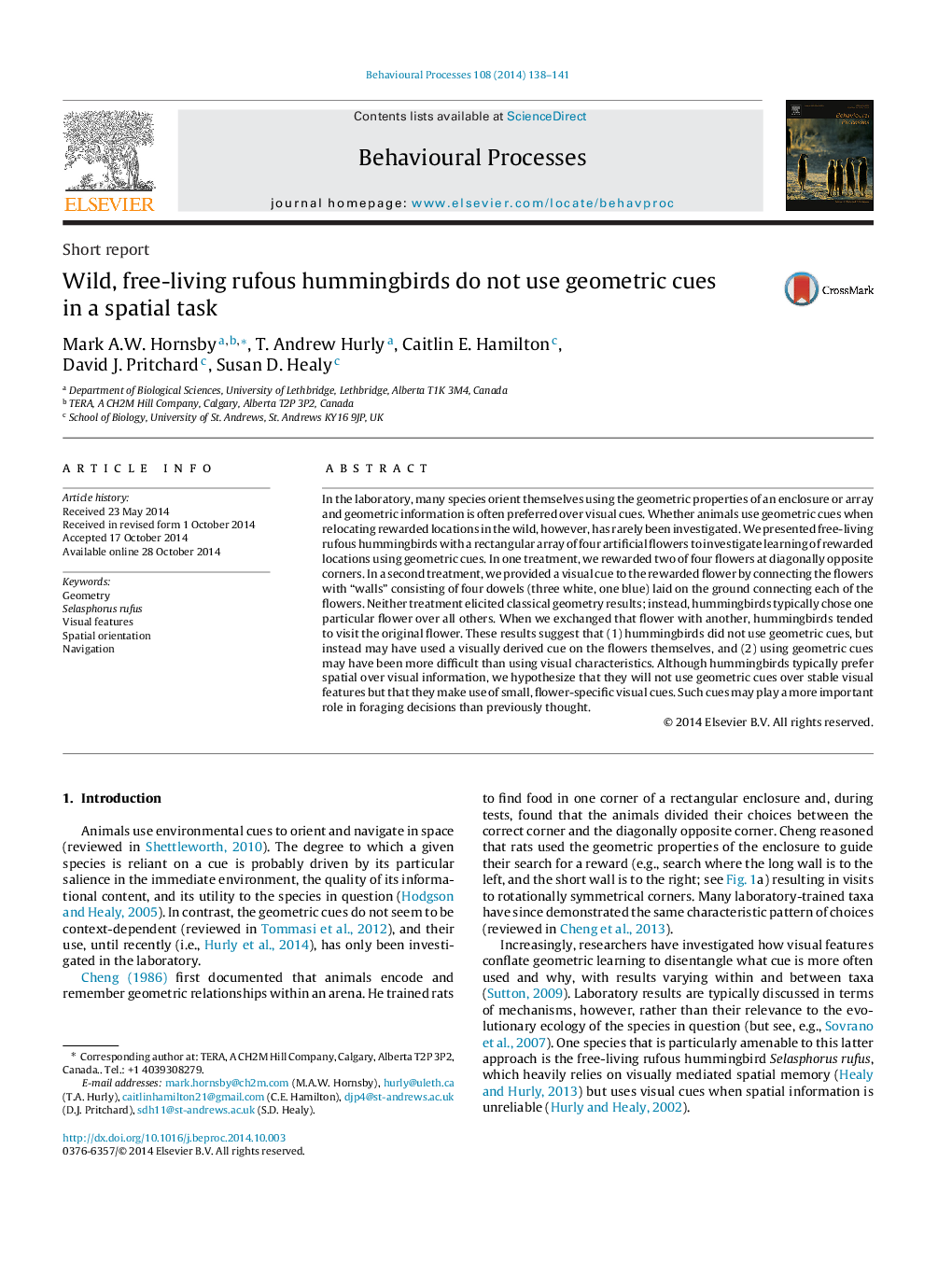| Article ID | Journal | Published Year | Pages | File Type |
|---|---|---|---|---|
| 2426702 | Behavioural Processes | 2014 | 4 Pages |
•We tested whether wild hummingbirds encode geometry similarly to lab-trained animals.•Hummingbirds did not appear to use geometric cues to learn a rewarded location.•Hummingbirds appear to have used minute, floral-specific visual patterns as cues to the reward.•We suggest that wild hummingbirds may prefer visual patterns over geometric cues.
In the laboratory, many species orient themselves using the geometric properties of an enclosure or array and geometric information is often preferred over visual cues. Whether animals use geometric cues when relocating rewarded locations in the wild, however, has rarely been investigated. We presented free-living rufous hummingbirds with a rectangular array of four artificial flowers to investigate learning of rewarded locations using geometric cues. In one treatment, we rewarded two of four flowers at diagonally opposite corners. In a second treatment, we provided a visual cue to the rewarded flower by connecting the flowers with “walls” consisting of four dowels (three white, one blue) laid on the ground connecting each of the flowers. Neither treatment elicited classical geometry results; instead, hummingbirds typically chose one particular flower over all others. When we exchanged that flower with another, hummingbirds tended to visit the original flower. These results suggest that (1) hummingbirds did not use geometric cues, but instead may have used a visually derived cue on the flowers themselves, and (2) using geometric cues may have been more difficult than using visual characteristics. Although hummingbirds typically prefer spatial over visual information, we hypothesize that they will not use geometric cues over stable visual features but that they make use of small, flower-specific visual cues. Such cues may play a more important role in foraging decisions than previously thought.
